Registan square
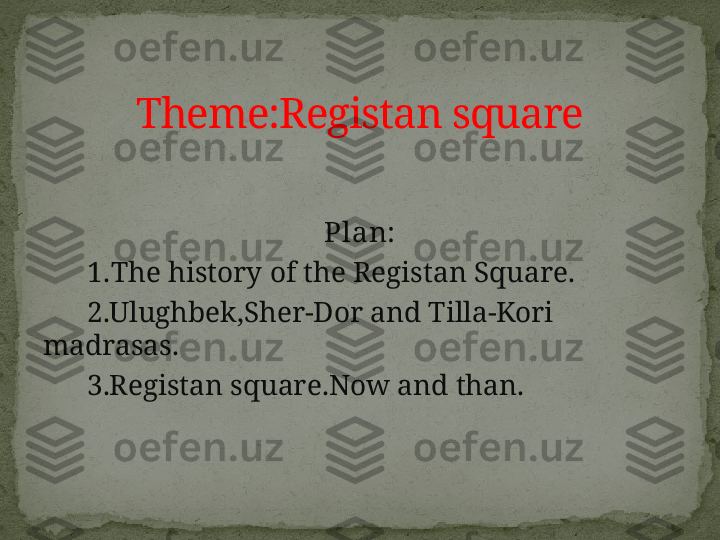
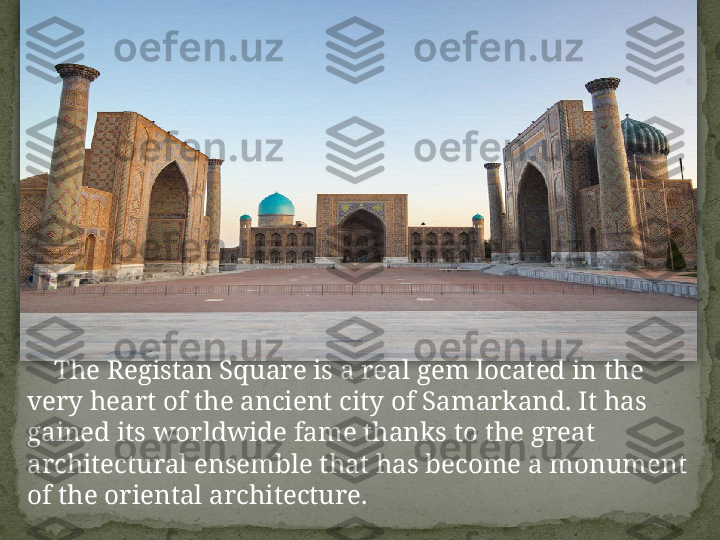
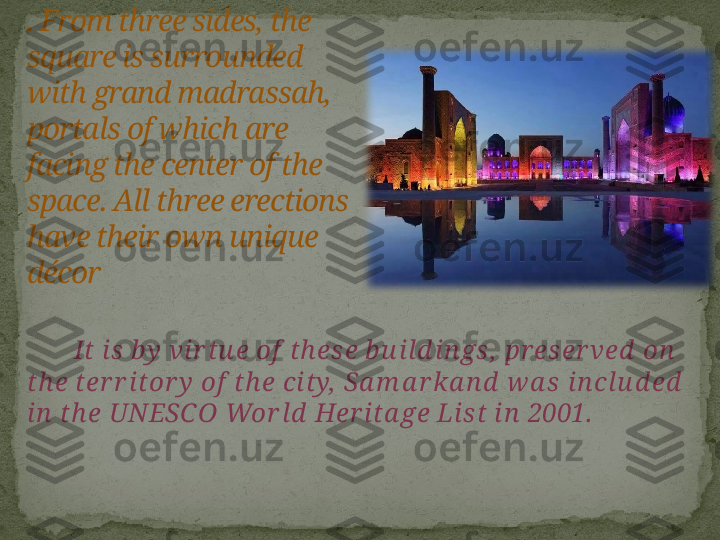
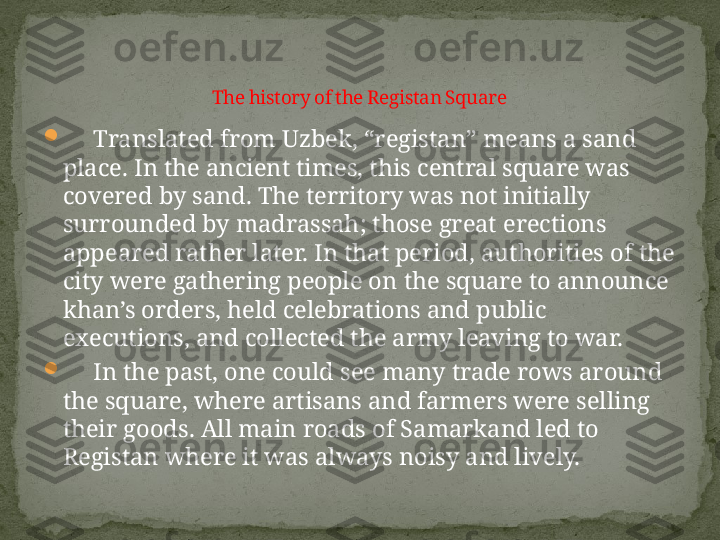
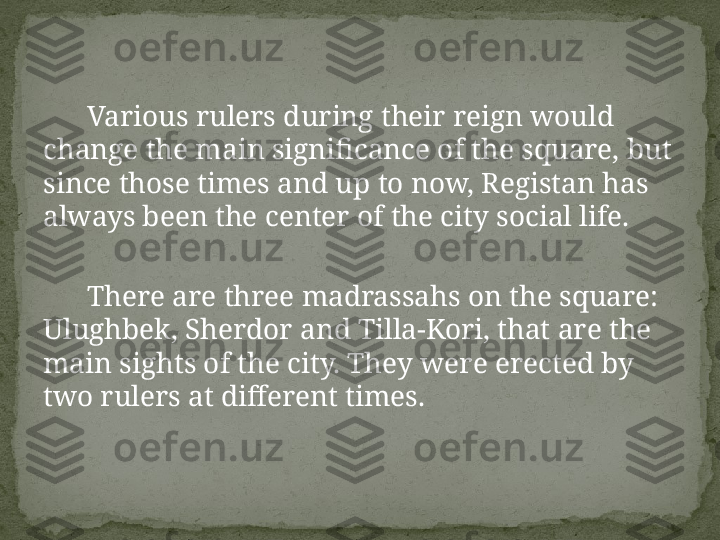
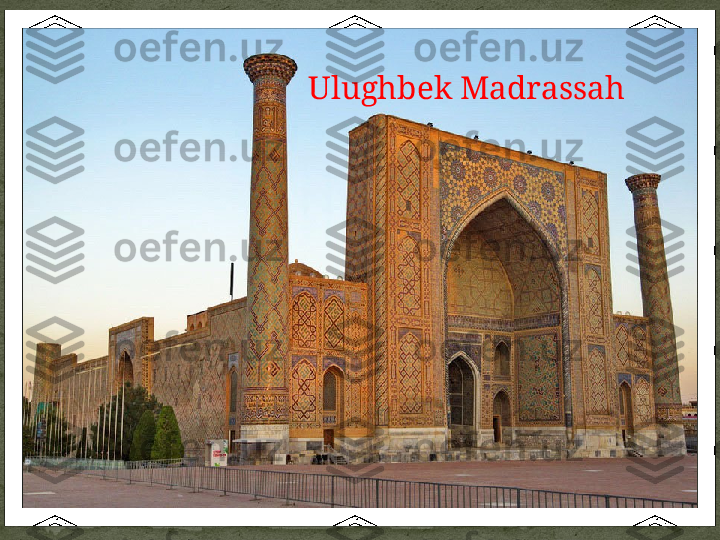
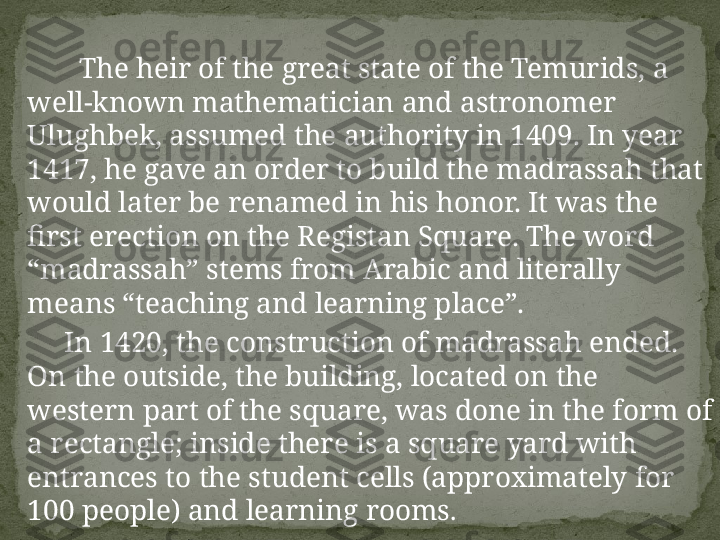
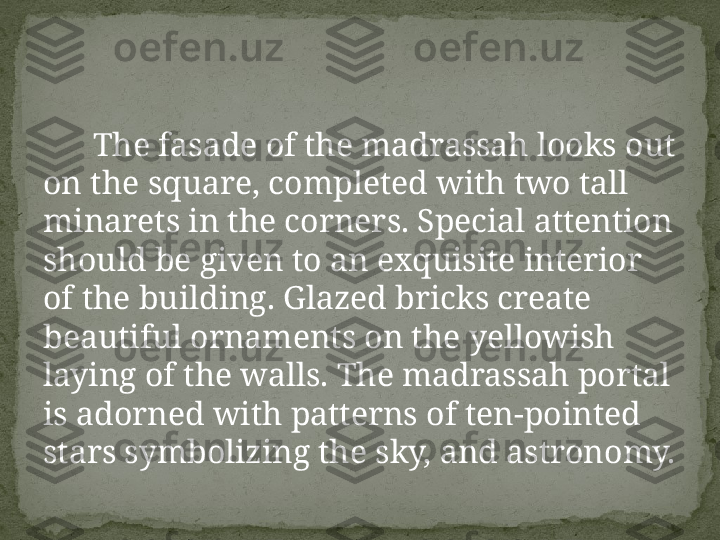
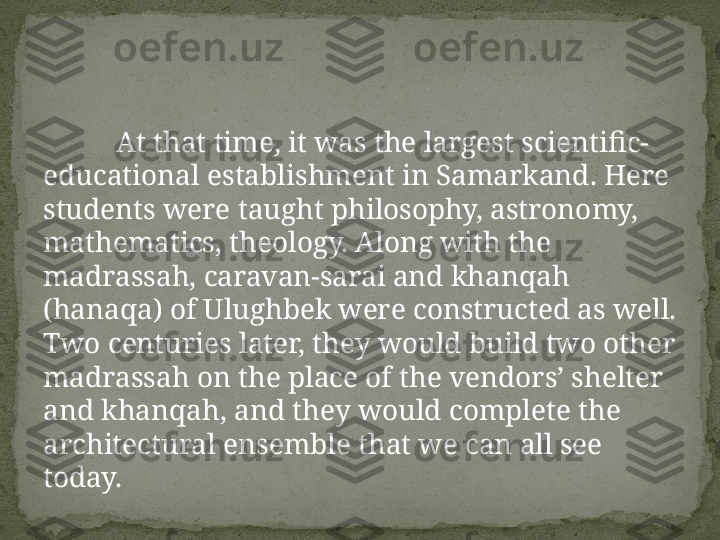
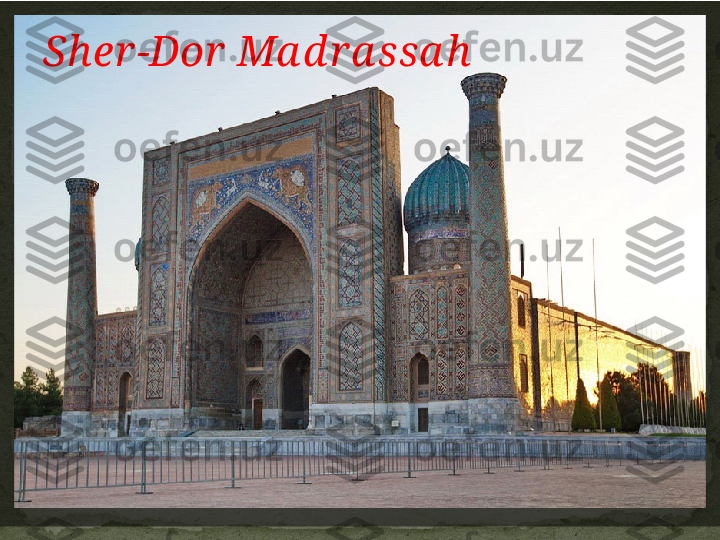
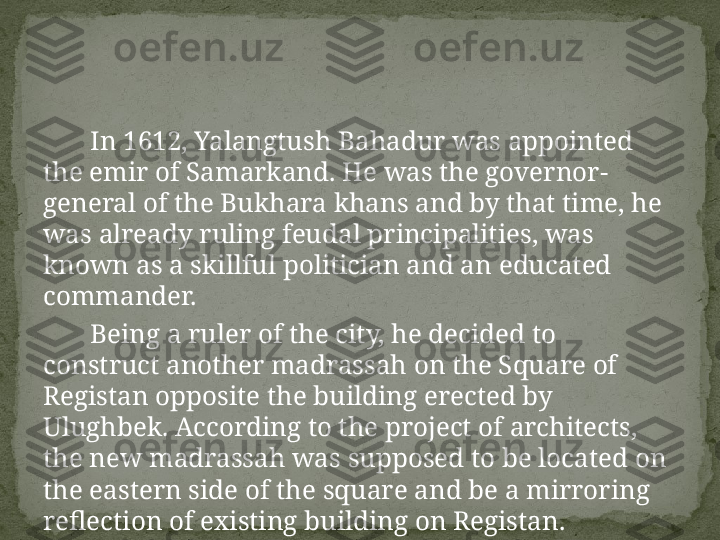
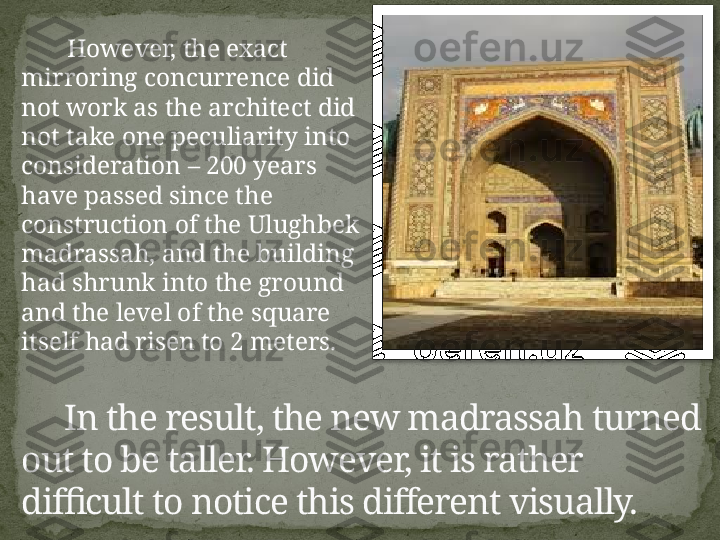
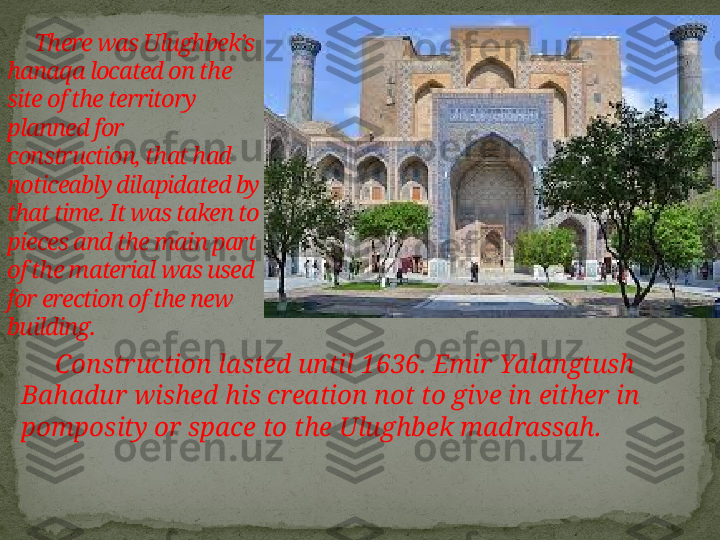
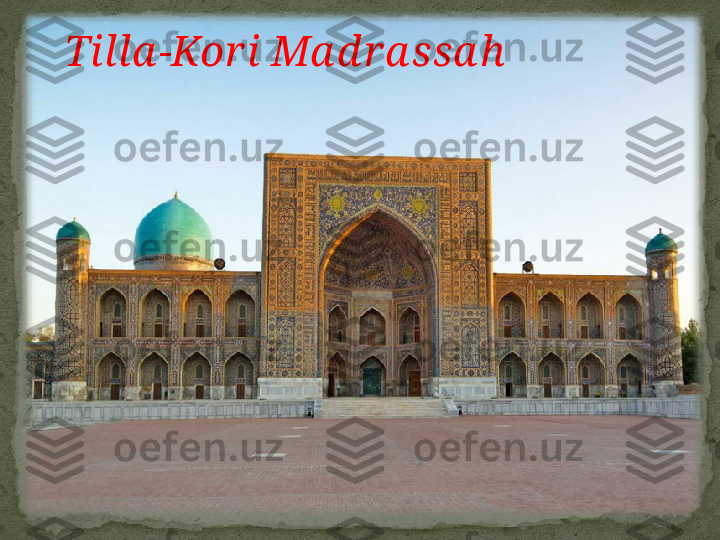
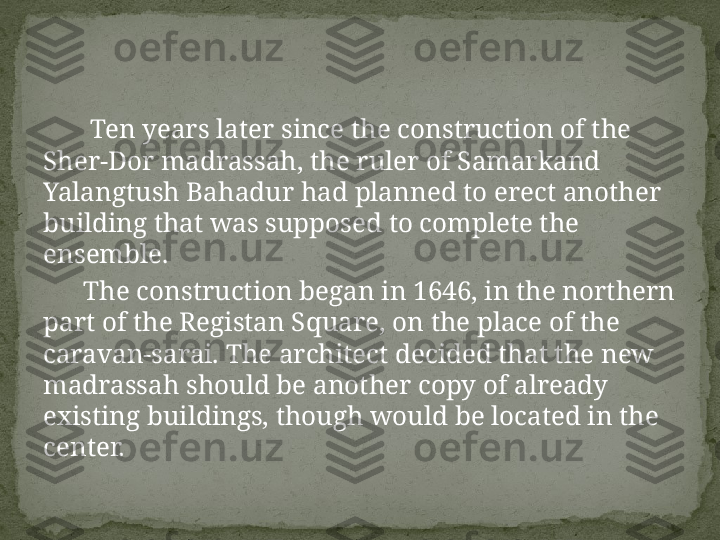
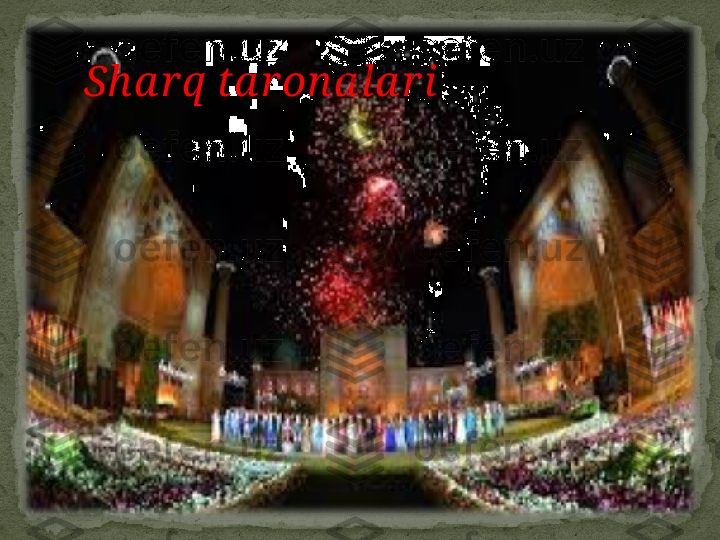
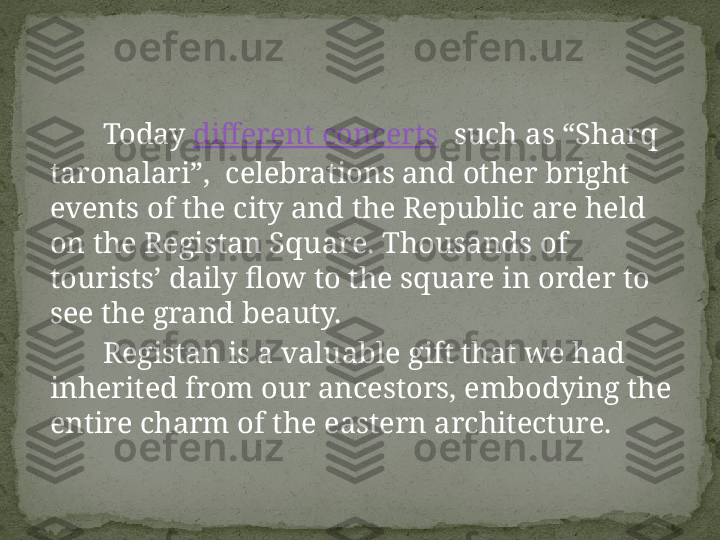

Plan: 1. The history of the Registan Square. 2.Ulughbek,Sher-Dor and Tilla-Kori madrasas. 3.Registan square.Now and than. Theme:Registan square
The Registan Square is a real gem located in the very heart of the ancient city of Samarkand. It has gained its worldwide fame thanks to the great architectural ensemble that has become a monument of the oriental architecture.
It is by vi r tu e of th ese b u ild i n gs, pr eser ved on th e ter r itor y of th e city, Sa m a r ka n d w a s in cl u d ed in th e UNESCO Wor ld Her ita ge Li st i n 2001.. From three sides, the square is surrounded with grand madrassah, portals of which are facing the center of the space. All three erections have their own unique décor
Translated from Uzbek, “registan” means a sand place. In the ancient times, this central square was covered by sand. The territory was not initially surrounded by madrassah; those great erections appeared rather later. In that period, authorities of the city were gathering people on the square to announce khan’s orders, held celebrations and public executions, and collected the army leaving to war. In the past, one could see many trade rows around the square, where artisans and farmers were selling their goods. All main roads of Samarkand led to Registan where it was always noisy and lively. The history of the Registan Square
Various rulers during their reign would change the main significance of the square, but since those times and up to now, Registan has always been the center of the city social life. There are three madrassahs on the square: Ulughbek, Sherdor and Tilla-Kori, that are the main sights of the city. They were erected by two rulers at different times.
